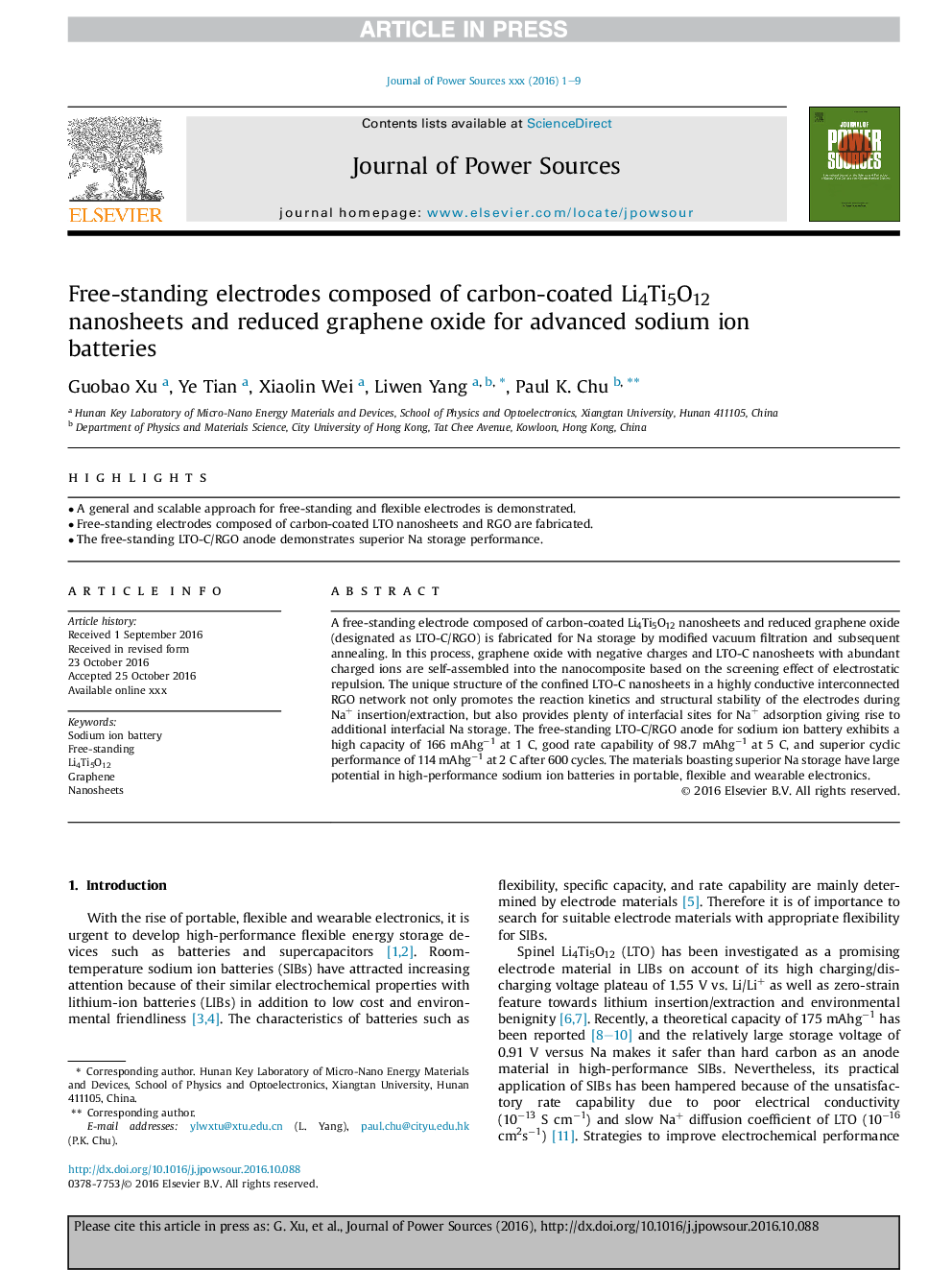| Article ID | Journal | Published Year | Pages | File Type |
|---|---|---|---|---|
| 5149989 | Journal of Power Sources | 2017 | 9 Pages |
Abstract
A free-standing electrode composed of carbon-coated Li4Ti5O12 nanosheets and reduced graphene oxide (designated as LTO-C/RGO) is fabricated for Na storage by modified vacuum filtration and subsequent annealing. In this process, graphene oxide with negative charges and LTO-C nanosheets with abundant charged ions are self-assembled into the nanocomposite based on the screening effect of electrostatic repulsion. The unique structure of the confined LTO-C nanosheets in a highly conductive interconnected RGO network not only promotes the reaction kinetics and structural stability of the electrodes during Na+ insertion/extraction, but also provides plenty of interfacial sites for Na+ adsorption giving rise to additional interfacial Na storage. The free-standing LTO-C/RGO anode for sodium ion battery exhibits a high capacity of 166Â mAhgâ1 at 1Â C, good rate capability of 98.7Â mAhgâ1 at 5Â C, and superior cyclic performance of 114Â mAhgâ1 at 2Â C after 600 cycles. The materials boasting superior Na storage have large potential in high-performance sodium ion batteries in portable, flexible and wearable electronics.
Related Topics
Physical Sciences and Engineering
Chemistry
Electrochemistry
Authors
Guobao Xu, Ye Tian, Xiaolin Wei, Liwen Yang, Paul K. Chu,
